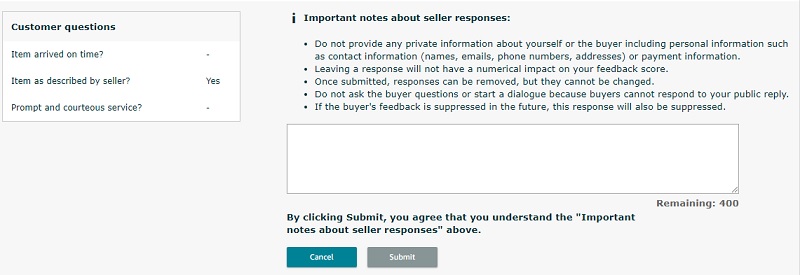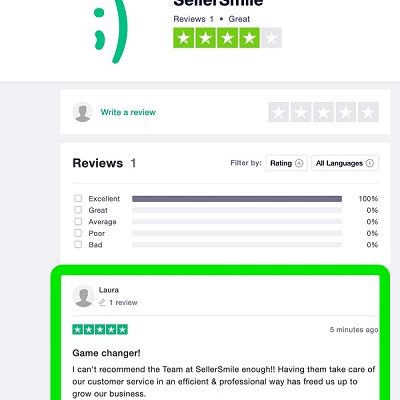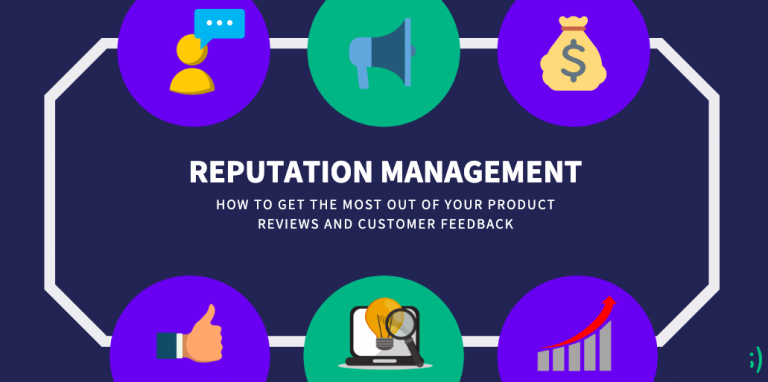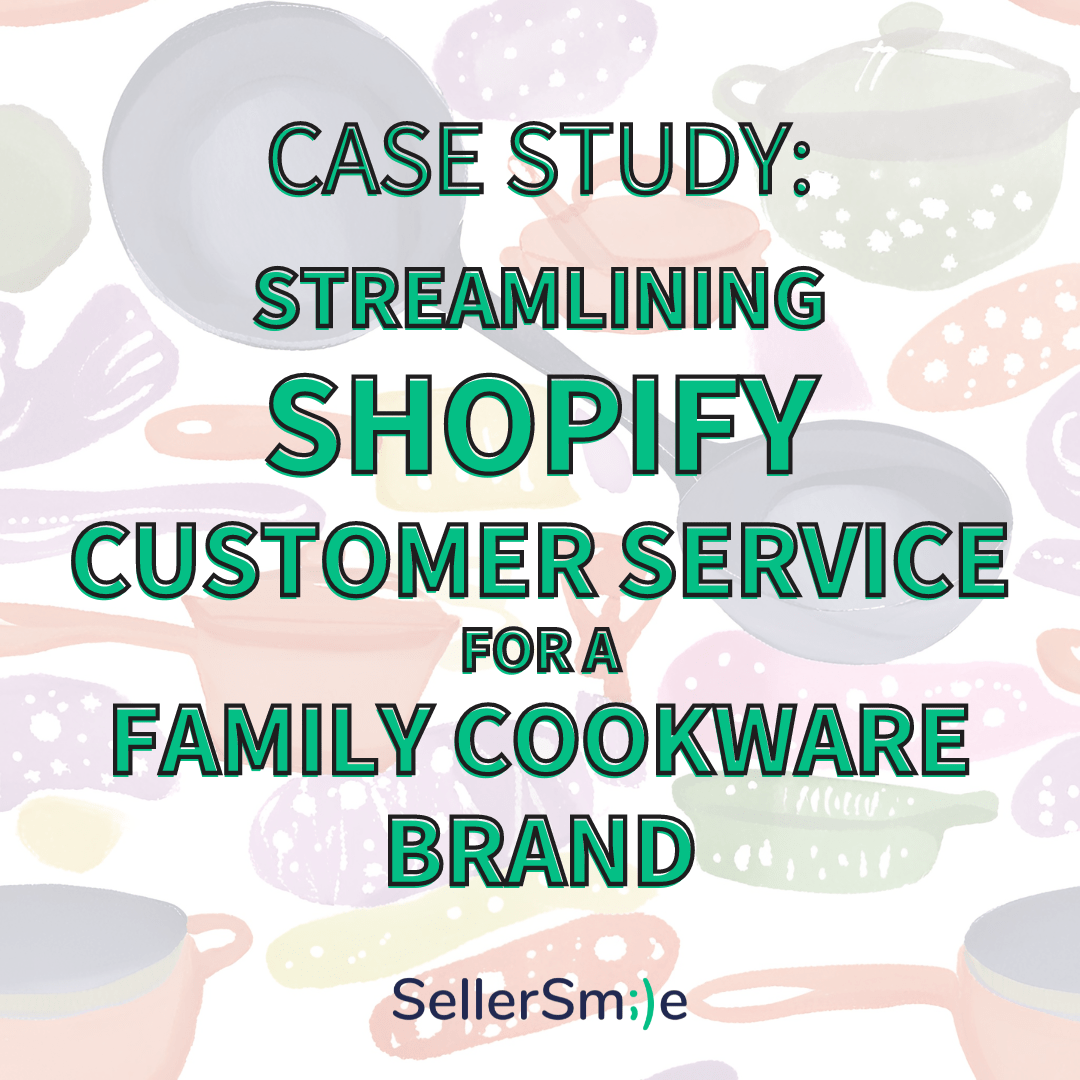“The secret of crisis management is not good vs. bad, it’s preventing the bad from getting worse.” – Andy Gilman
Not too long ago, online retail was a very different place. Many businesses were selling to a passive market and using the internet to engage with customers or companies was rare. Customers didn’t have the number of resources to be as vocal about their opinions as they do today.
Over the course of a few years, the internet made a radical, but much needed change. Passive audiences became a thing of the past and new customer engagement platforms began to launch every day. The rise of Facebook, Google, and Amazon (to name a few) started to give everyday consumers a voice, they had the ability to tell the world about their experience in an instant!
The concept of public reviews was born, allowing shoppers to have a reference point on others’ experiences with their purchase. It allowed shoppers to feel more secure in making buying decisions by simply taking a few moments and reading about how it went for others.
Public reviews added a whole new level of complexity for business owners. If the product or service isn’t top-notch, others might hear about it sooner or later. Maintaining a positive online reputation became crucial since reputation can make or break a business. Even just a few significant negative reviews can discourage others from going through with their purchase.
Although there may not always be a perfect solution that could “fix” a reviewer’s issue, your approach to handling public reviews and buyer feedback is important. Your responses can have a lasting impact in either turning potential buyers away and losing future sales, or reassuring potential buyers and using your response as an opportunity to sell them on your product.
Reputation management is a strategy for building buyer trust by being responsive and doing all that you can to provide an excellent experience.
Why is reputation management important?
Your business’ public reputation is a vital source of growth. Let’s start by looking at the influence of online reviews:
- 95% of buyers go through online reviews before purchasing anything (Spiegel Research Center, 2017)
- According to 97% of buyers, reviews influence their buying decisions (Fan and Fuel, 2016)
- A brand’s reputation makes up almost 25% of its market value (Deloitte, 2012)
- “High-quality, positive reviews from your customers can improve your business visibility” (Google, 2023)
- Negative reviews prevent 40% of consumers from using a product or service (BrightLocal, 2017)
- 34% of consumers with negative experience are more likely to leave reviews than consumers with a positive experience (Review Trackers, 2018)
Buyers also have expectations for what happens after they leave a review:
- 53% of buyers expect a reply to their online reviews within seven days (Review Trackers, 2018)
- 63% of consumers never received a reply after leaving a review (Review Trackers, 2018)
- “When you engage with shoppers on major retail sites, you’ll see conversion increases by as much as 98%” (Bazaarvoice)
What does this mean?
There are a number of reasons why businesses should manage their online reputation.
Build credibility – Gaining customers’ trust is essential for a businesses’ success. Address feedback properly and immediately. A negative review about your product or service can spread easily and sometimes faster than a positive one. A reputation management strategy can reduce the impact of a negative review or it can even turn a negative review to a neutral or even a positive review.
Enhance brand Image – Regular and helpful public interaction can help your brand image by showing buyers that you care about their experience and what they have to say. This is a chance to show your dedication to providing an excellent customer experience, even if it means acknowledging mistakes or issuing replacements.
Help boost sales – Your reputation goes a long way. As it grows, so will your sales! By exercising a caring and helpful reputation management strategy, potential buyers will feel more secure in choosing to purchase from you while you’re developing brand loyalty with previous customers and providing a service that encourages them to become repeat buyers.
Improve your business – Reputation management gives you a chance to learn about ways to improve your product or service. Your customers consistently provide you with sources of future opportunity each time they give you feedback. Some sellers even launch new products based on key product reviews. Their feedback can turn into a new way to educate buyers, a new product offering, or even a new iteration on an existing product.
Having a strong reputation management strategy includes being responsive to feedback, through a catered and helpful response and doing so in a timely manner.
So how do you effectively manage your online reputation exactly? There are several factors to consider when creating your strategy.
Send follow up emails
Up to 80% of reviews (both positive and negative) come from follow-up emails convincing consumers to review their purchases (Power Reviews, 2017)
The first step in creating an effective strategy is to send helpful follow-up emails after the sale. If you’re not already using an automated follow-up email system, there are many options out there to review.
For Amazon sellers, we recommend Feedback Genius because it allows sellers to send a message triggered on actual delivery, instead of estimated delivery. This can make a big difference when considering the timing of your email; you wouldn’t want to send a review request to a buyer who didn’t receive their order.
Your follow-up emails should not demand or beg for reviews, but rather should focus on benefiting your buyers’ experiences over anything else. Consider that Amazon sends buyers notification emails. It is important that your emails are helpful and really provide value. We recommend a sequence of 1-2 emails maximum. Each email should include only one clear call to action.
Here are a few more questions to ask yourself when reviewing your email sequence:
- Do customers know how to contact you?
- Do you offer a warranty? If so, does your messaging include steps for a warranty claim?
- Are there common product questions you receive that could be answered right away?
- Are there setup instructions you can include? (This may be a good opportunity to send a PDF ebook).
- Is your messaging Amazon compliant?
Seller Labs, the team behind Feedback Genius, provides some helpful insights on how to structure your follow-up emails in an efficient and compliant fashion here.
Respond to all reviews
UPDATE: In June 2021, Amazon now allows sellers to send direct messages to reviews/buyers. Read more in our full post, “Contact Amazon Buyers from Customer Reviews on the Brand Dashboard.“
The second important step to creating a strong reputation management strategy is to respond to all reviews. There are numerous forums and mediums where buyers can express their thought, in an Amazon product review, seller feedback, or reviews on other public channels such as your website or social media.
We’ve rounded up some of the most common mediums for reputation management below:
- Amazon Product Reviews and Seller Feedback
- Reviews on Your website
- Social Media (Facebook, Twitter, Instagram, LinkedIn)
- Google and other public review systems (e.g. Trustpilot)
Let’s discuss these forums in greater detail.
Amazon Product Review monitoring
Buyers can rate the products that they buy from 1-5 stars, 5 stars being the highest and 1 star being the lowest. Since buyers heavily rely on reviews every time they purchase anything, it is crucial that sellers monitor their product reviews.
Benefits of Answering Product Reviews:
- It shows buyers that you care – It won’t mean much to some but if you show customers that you actually care about them, they could become repeat customers. It shows that you are an active, attentive seller who is committed to a positive customer experience from beginning to end. Taking the time to respond to all reviews, not just the negative ones, demonstrates a high level of attentiveness that makes all customers feel important and like their opinion matters, even when the situation is small.
- It shows buyers that you are always willing to help them out – It goes a long way if you show buyers that you’re always willing to extend a helping hand and offer support or your expert advice!
A positive product review is a sign of a good experience and a satisfied customer. The following is an example of a positive review and an appropriate response.
Sample positive review: “Five stars, thank you!”
Sample response:
Hello [first name OR Amazon username],
Thanks so much for your feedback! We’re glad to hear you’re enjoying your purchase so far. We can’t wait for the next opportunity to serve you. Let us know if you have any trouble with this or a future order.
We hope you have a great day!
Best Regards,
(Name)
(Company)
A neutral or negative product review does not mean you are not doing a good job as a seller, but it may mean that there are some areas where your product or service can improve. The following is an example of a negative review and an appropriate response.
Sample neutral/negative review: “This [product] does not adjust to my size.”
Sample response:
Hello [first name OR Amazon username],
Thanks for your review.
We are truly sorry to hear about your poor experience. It’s possible you may need a different size for your needs.
We’d love to help improve your experience! At your earliest convenience, please feel free to contact us through our Amazon contact form here: [insert Amazon storefront contact link].
Thank you for your patience. We hope to hear from you soon!
Best Regards,
(Name)
(Company)
Bonus Tip: Amazon prefers to keep your communication with shoppers directly within Buyer-Seller Messaging. You can direct shoppers to your Amazon storefront inbox by going to one of your product listings on Amazon and clicking on your third-party seller name. Right-click and copy on the “Ask a question” button for your unique storefront contact URL.
Sample Negative Review Solution:
- Replied to the customer’s product review.
- Presented an immediate solution.
- Included a link to Amazon Buyer-Seller Messaging for further assistance.
- Signed off in a friendly manner with a real name.
General guidelines for answering product reviews
- Make your replies short and sweet – It’s best to make your replies simple and concise unless a longer response is necessary. You may include a link to your Amazon contact page if they need further assistance
- Reply appropriately – Be professional but warm. It is always a plus if you can help someone out while replying to their negative review, so be certain to kindly offer a potential solution to the issue
- Learn from positive and negative reviews – It’s not always bad to receive critical reviews because it can serve as a great learning experience. Negative reviews show sellers what they lack and what they could be doing wrong. Mention this in your reply! The customers like to know that they are being heard, not just brushed off.
- Don’t forget to thank your customers, even the ones who left negative reviews – It’s common courtesy to always thank your customers. Don’t leave out the negative ones, turn them in your favor!Even if we think a negative review is unfair, remember that buyers reserve the right to express their opinion even if it doesn’t match yours. Remember to thank them for helping you grow as a company.
- A seller cannot offer incentives in exchange for changing or removing a review – A seller can’t ask anyone to review their products or a competitor’s product in exchange for any form of financial compensation, discounts or freebies. This is considered review manipulation and it’s taken very seriously. Read more at Amazon’s Anti-Manipulation Policy for Customer Reviews.
- Keep it general – Don’t reveal private details about the customer nor about the order. Privacy is security. We recommend directing reviewers to use Amazon’s Buyer-Seller Messaging to resolve open issues about their order.
Seller Feedback monitoring
A fundamental part of the Amazon ecosystem is Seller Feedback, the option of allowing buyers to leave a rating and a comment for the seller they purchased from. This gives future customers an indication of the type of experience they should expect to have with a seller.
Since Seller Feedback for products (not services) is intended to be a rating of the shipping/fulfillment and customer service provided, Amazon takes responsibility for the Seller Feedback score of FBA transactions.
Buyers can choose to give a Seller Feedback rating from 1 star to 5 stars. (1 – Awful, 2 – Poor, 3 – Fair, 4 – Good, 5 – Excellent). A seller’s average rating appears alongside their name on Amazon’s site. Amazon Seller Feedback works as a way for other buyers to know whether you’re a seller worth purchasing from. Additionally, if your seller feedback rating gets too low, Amazon may decide to ban you from selling from their website.

Amazon only removes feedback in these cases:
- The feedback includes vulgar/inappropriate language.
- The feedback includes seller-specific personally recognizable information.
- The entire feedback is a product review.
Amazon will strikethrough feedback in these cases:
- The entire feedback is a fulfillment issue and it was an FBA order.
- The entire feedback is related to delayed or not received packages and it was an FBA order.
Example of a Positive Seller Feedback:

Negative Seller Feedback – Negative seller feedback does not always mean that it is the seller’s fault. Sometimes, it is a fulfillment issue or packages that were stolen or otherwise not received by the buyer.
Here’s an example of a negative Seller Feedback and how to deal with it:
Problem: The item arrived broken
Example of a Negative Seller Feedback

Solution: Since Amazon decided that this seller feedback did not violate any of their guidelines, the feedback was not struck through nor removed. However, you can always respond to the customer with 90 days by following Amazon’s guidelines for appropriate responses. You may also contact the customer via buyer-seller messaging in case the customer needs assistance.
If you’re not satisfied with Amazon’s decision to retain the seller feedback, you can always open a case to dispute it.
Benefits of monitoring Seller Feedback
- You can make sure invalid negative feedback is struck through or removed.
- You gain insight into how your fulfillment team is performing.
- You can see areas in your business that needs improvement.
- You can read real opinions from people who have tried and/or use your products.
Seller Feedback response tips
- Make sure that you are always following Amazon’s policies.
- Do not provide any personal information in your response.
- Once a response is submitted, it can be removed but it cannot be edited.
- Buyers cannot respond to your public reply, so do not start a conversation with them in your response. You can always send them an email if you need clarification or to ask if they require further assistance.
Here’s an example of where you can type in your Seller Feedback response:

(Source: Amazon Seller Central)
Social media community management
We survey and engage with social media conversations about a brand or a product across multiple platforms, like Facebook, Instagram, Twitter, and more.
It can give you an idea about what is being said about your product or your brand in general in a passive state; sometimes customers don’t reach out directly to you for help resolving an issue but would rather express their concerns in a more public forum.
Social media and your brand
- Your brand becomes more approachable – When customers see you (the company) responding to posts and comments in a helpful and happy way, they’ll feel more comfortable reaching out to you in other ways
- Build greater value – Social media monitoring helps companies see what people are saying about their brand, positive and negative, so they can take action to remedy the bad and celebrate the good
- Fresh ideas for your content – It’s important to write about something new and interesting. However, it’s easier said than done. Social media monitoring helps companies stay inspired. Insights from social media activity can be your muse.
- Learn about your products and your competitors – Through social media monitoring, companies can stay up to date in the developments in their field or industry, helping companies recognize trends and plan ahead.
Trustpilot reviews
Looking for a way to collect and display authentic reviews off of Amazon? Trustpilot is an online review community, a leading independent review platform which helps shoppers make great decisions about their purchase. With Trustpilot, people have a place to express their opinions and at the same time discover reviews of different businesses.

Email templates
Creating and making use of response templates can save you a lot of time. You just need to know when and how to use them appropriately.
Creating templates for your reviews:
- Make templates short and direct – Efficient and friendly is key.
- Add a touch of personalization – Templates can be very helpful but it’s important to personalize your templates with every response so that they don’t sound robotic. Since the rise of AI and chatbots, it’s critical that buyers know that real people are responding to their queries.
- Remain courteous – No one will ever complain about you being too polite!
- Create general templates that can be used in multiple situations – Versatility reduces your effort while maintaining a strong message and resolution. General templates also help as placeholders while letting the customer know they are being taken care of.
- Include links for further assistance – In Amazon, this is usually a link to the seller’s contact page, but for your own website, it might be a customer service email address.
Reputation management on Amazon
- Regularly review Amazon’s policies – These can change at any time so it’s essential to be up to date. Never ignore messages you receive from Amazon through your seller account, you don’t know how it may impact your business.
- Do not engage in review manipulation – Never use services which sell or guarantee Amazon product reviews. Sellers cannot provide a free or discounted product in exchange for a customer review. We know it’s tempting, but trust us- it is not worth the trouble. Your account might even get suspended.
- Read Amazon’s Anti-Manipulation Policy for Customer Reviews. A seller cannot review their own product or a competitor’s product.
- Sellers cannot ask a reviewer to change or remove a product review. Sellers can comment on the review publicly as long as they follow Amazon’s Guidelines.
- Sellers should never ask for positive reviews.
- Sellers shouldn’t attempt to divert buyers – Diverting unhappy customers to the customer service team while directing happy customers to leave positive reviews to Amazon is forbidden. This means that language like, “If you had a positive experience with our product, please leave us a review on Amazon! If you don’t love our product, kindly reply to this email and we’ll do everything we can to make it right.” is a violation of Amazon’s policy.
Conclusion
Reputation Management is an integral part of a brand’s online presence. Proper management of the various online forums can alter how a brand’s reputation is received and understood and can make or break a business. In a world where everything is fast-paced, it is important that sellers take action to protect their online reputation in an efficient and friendly way.
The benefits of a comprehensive reputation management strategy are worth the effort to implement them.
At SellerSmile, we offer Product Review Monitoring and Seller Feedback Monitoring for Amazon sellers. We take pride in knowing that we’re helping sellers maintain their personalized, customer-centric online reputation, giving them more time to work on expanding their businesses or enjoying the fruits of their labors.
“A brand for a company is like a reputation for a person. You earn reputation by trying to do hard things well”. – Jeff Bezos
If you’d like to learn more about Reputation Management services and how it can help your business, schedule a free consultation with our team at SellerSmile.com/Schedule.
If you’re ready for SellerSmile to begin offering your customers an excellent shopping experience, start your 7-day free trial today at SellerSmile.com/TrialStart.
Keep Smiling! 🙂





This Post Has One Comment
Pingback: Amazon’s New “Customer Reviews” Dashboard: Manage Your Product Reviews Right From Seller Central - SellerSmile